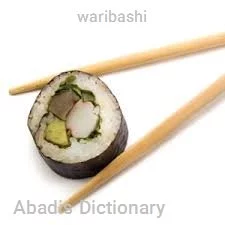Chopsticks are shaped pairs of equal length sticks that have been used as the traditional utensils of China, Vietnam, Korea and Japan for thousands of years. Chopsticks originated in ancient China and later spread to Vietnam, Korea and Japan. They can also be found in some areas of Tibet and Nepal that are close to Han Chinese populations. Chopsticks are smoothed and frequently tapered, and are commonly made of bamboo, plastic, wood, or stainless steel. They are less commonly made from porcelain, silver, ivory or jade. Chopsticks are held in the dominant hand, between the thumb and fingers, and used to pick up pieces of food.
... [مشاهده متن کامل]
A large variety of materials is available, including bamboo, wood, plastic, metal, bone, jade, porcelain, and ivory.
Bamboo and wooden chopsticks are relatively inexpensive, low in temperature conduction, and provide good grip for holding food. They can warp and deteriorate with continued use if they are of the unvarnished or unlacquered variety. Almost all cooking and disposable chopsticks are made of bamboo or wood. Disposable unlacquered chopsticks are used especially in restaurants. These often come as a piece of wood that is partially cut and must be split into two chopsticks by the user ( serving as proof that they have not been previously used ) . In Japanese, these disposable implements are known as waribashi ( 割り箸 )
The pointed ends of the chopsticks should be placed on a chopstick rest when the chopsticks are not being used. However, when a chopstick rest is not available as is often the case in restaurants using waribashi ( disposable chopsticks ) , chopstick wrappers may be folded into a rest.
Reversing chopsticks to use the opposite clean end can be used to move food from a communal plate, and is acceptable if there are no communal chopsticks. In general, reversing chopsticks ( 逆さ箸, sakasabashi ) is frowned upon, however, because of the association to the celebratory chopsticks ( 祝い箸, iwai - bashi ) , where both ends of chopsticks are tapered, but only one end is for man to use, while the other is for use by God.
Chopsticks should not be crossed on a table, as this symbolizes death.
Chopsticks should be placed in the right - left direction, and the tips should be on the left.
In formal use, disposable chopsticks ( waribashi ) should be replaced into the wrapper at the end of a meal.
It is rude to stand chopsticks vertically in rice, or pass food from one pair chopsticks to another, as these are reminiscent of parts of Japanese funeral tradition


